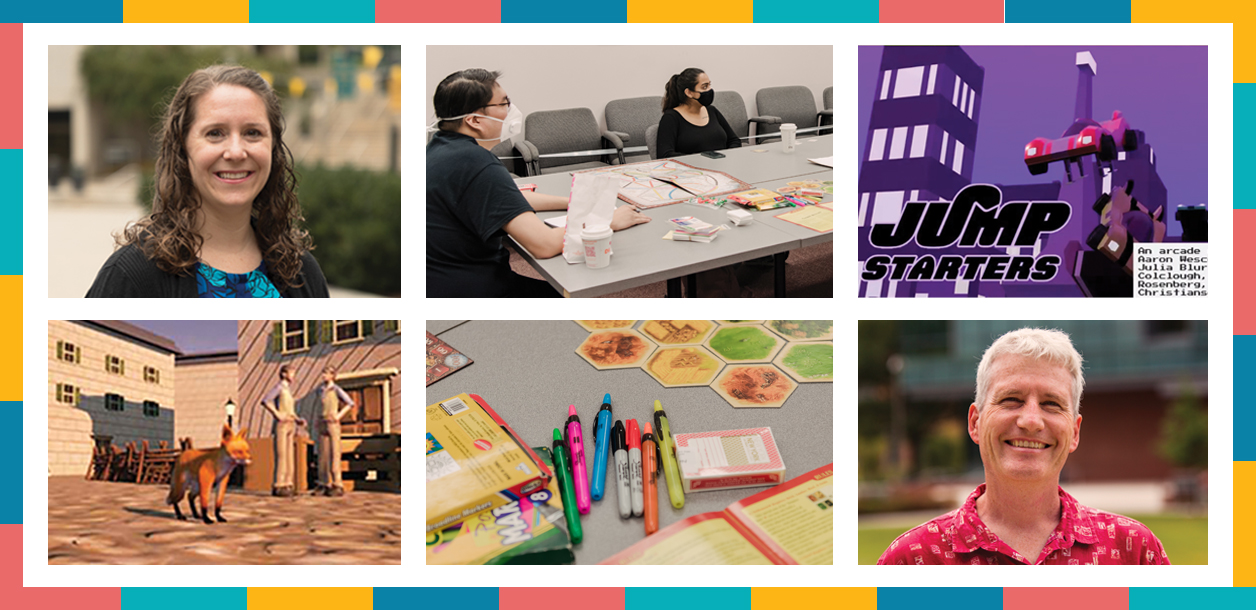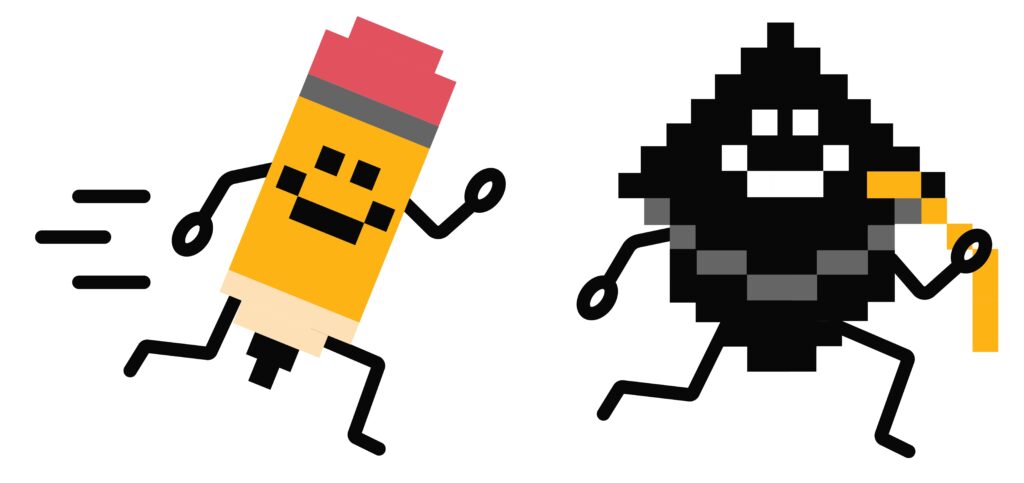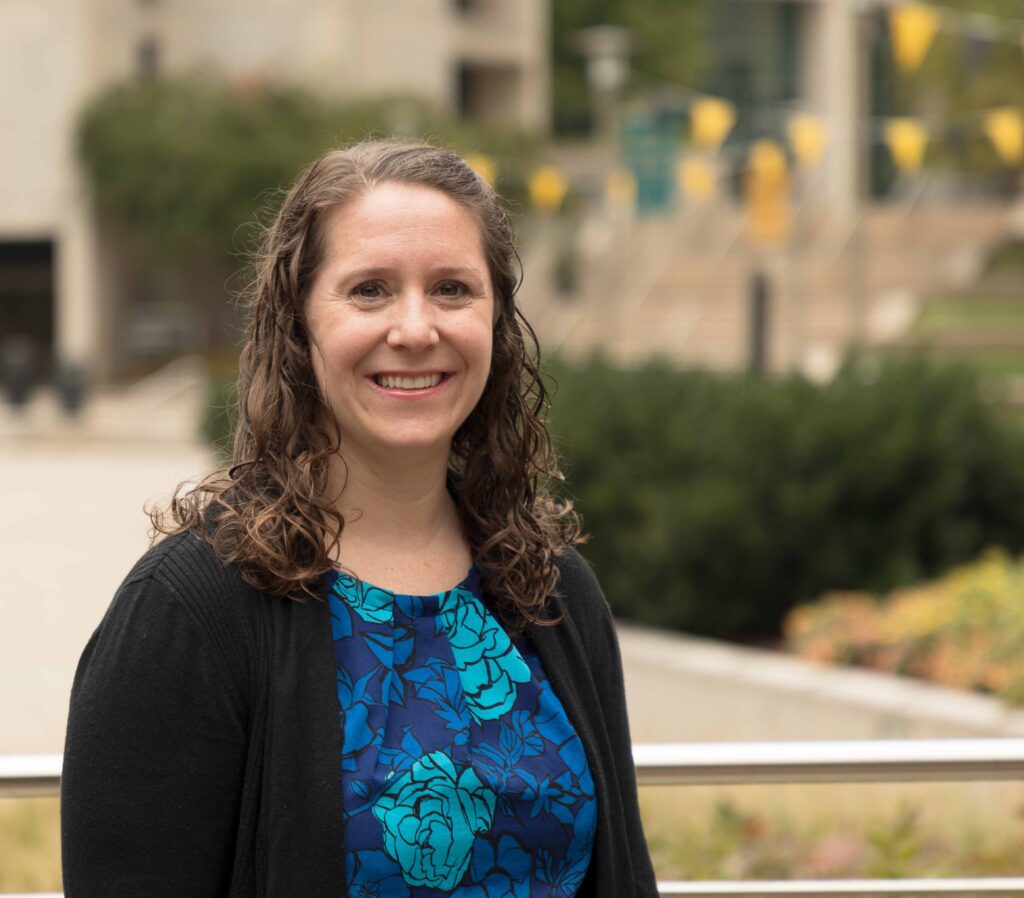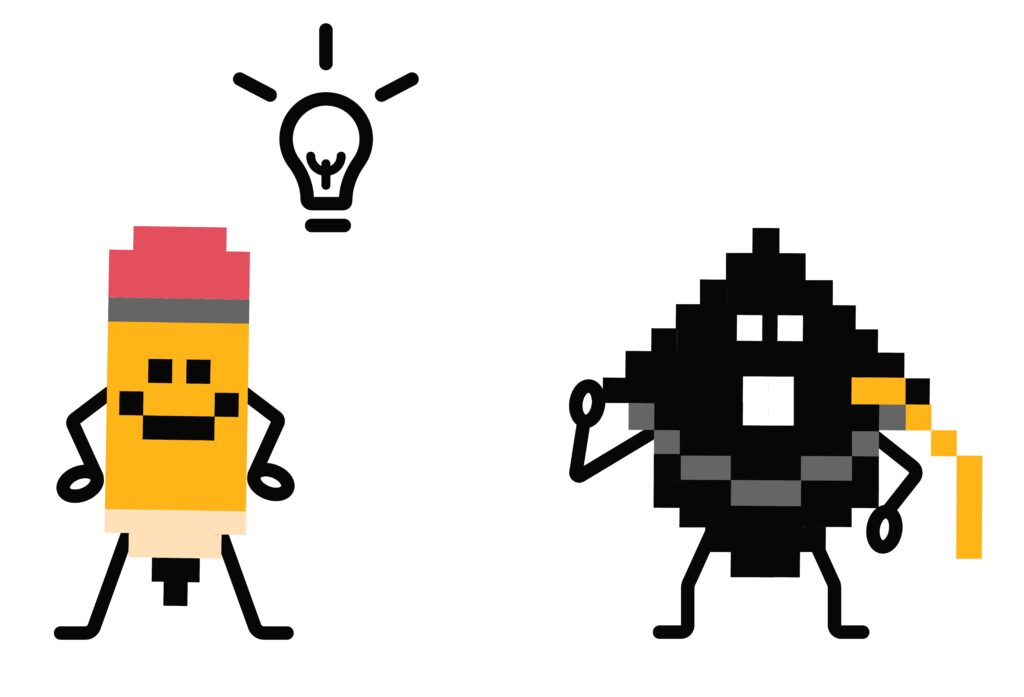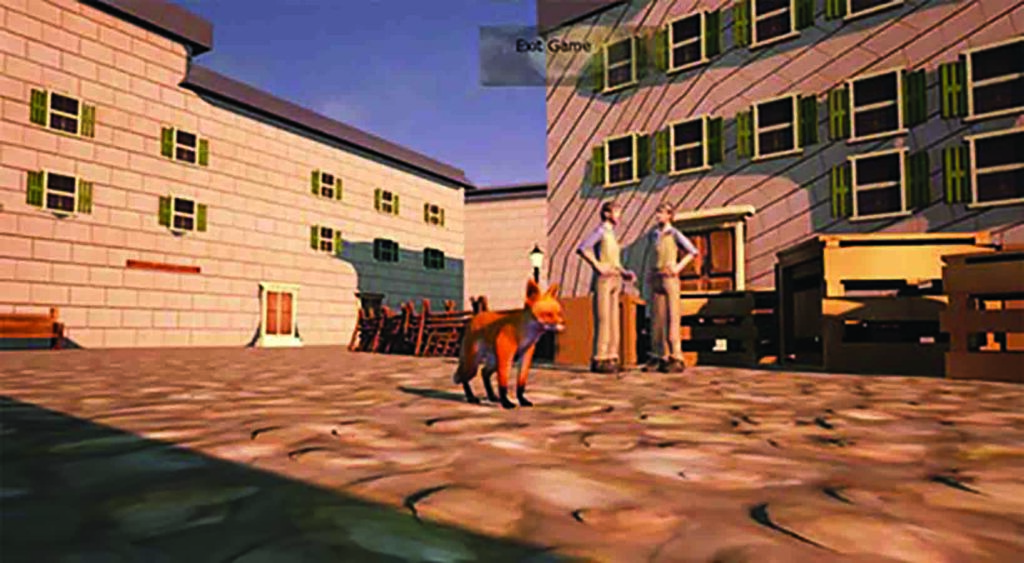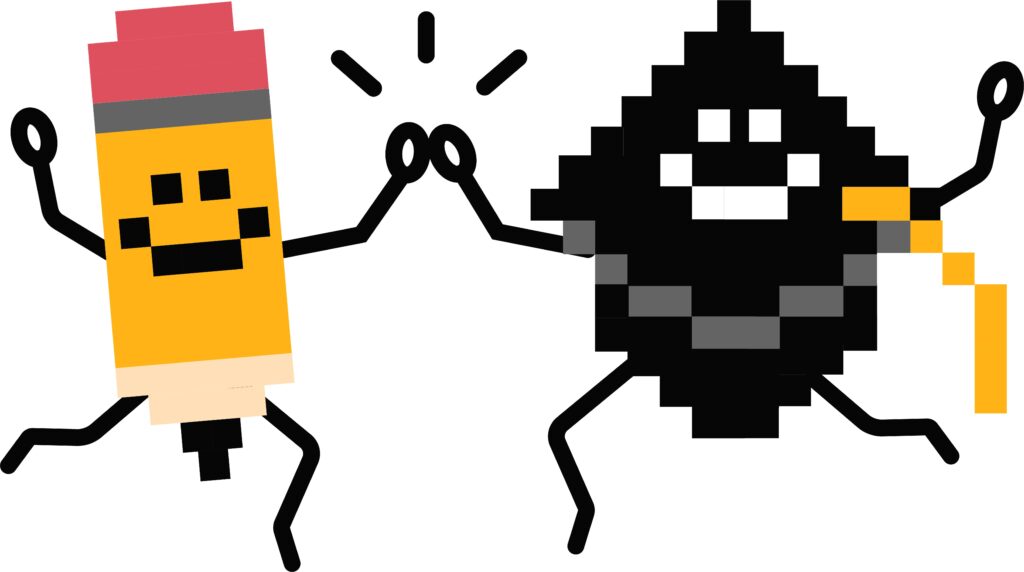At their most basic levels, learning and play can look a lot alike. Both call for creativity and resourcefulness; inspire curiosity; and require failure, reflection, and practice. For some students, learning isn’t all fun and games. But members of the UMBC community are looking to change that.
Kerri Evans always strives to make her curriculum engaging, but knew she needed a new way to connect her students to the material. As a social work professor at UMBC, Evans teaches and studies the experiences of recent immigrants and refugees to the U.S. and wanted a new way to expose her students to the trials and triumphs of immigrant children navigating the U.S. education system.
“Social work curriculums largely rely on analyzing and reflecting upon case studies,” Evans says. “But immigrant stories are so diverse—it’s hard to understand the breadth of their experiences just by reading and responding to a case study.”
While working as a program manager at Lutheran Immigration and Refugee Service in downtown Baltimore, Evans saw how an engaging training activity helped foster parents, educators, and staff to better understand the experiences of immigrant and refugee children. For the activity, participants read cards containing stories of immigrants as they navigated various stages of their journey, like falling off the train in Guatemala, or losing your relatives at the U.S. and Mexico border, for example. A group discussion followed of how these experiences, some horrific, influenced the lives of unaccompanied children in the U.S.
“It wasn’t a game in the traditional sense, but it was inspiring and engaging,” she says.
And thus, Evans’ idea for the board game “Emerging: The Educational Journey of Immigrant Students” was born.
The gamification of learning is an approach more instructors are adopting to motivate their students to think outside of the box. Professors like Evans and others are maximizing enjoyment and engagement in their classes by capturing the interests of students and inspiring them to keep learning. Students across disciplines at UMBC are getting hands-on experience building games—tangible ones like “Emerging” as well as a host of video games that also foster a collaborative learning environment. Both the students and teachers agree: Learning is a lot easier when you’re having fun.
Understanding the “Rules of the Game”

“Emerging” is still in its infancy, but it is attracting the help of people across the UMBC community. In fall 2021, Evans paired up with UMBC’s assistant professors of education, Jiyoon Lee and Keisha Allen, and five UMBC undergraduate and graduate students to help bring the game to fruition.
Both the game and a future interdisciplinary course will focus on the immigrant experience in the U.S. from pre-kindergarten to college, with the goal of teaching UMBC students who will become service providers and teachers to understand the experiences faced, to advocate for inclusion, and to dismantle racism in schools.
Funded by a UMBC Hrabowski Innovation Fund Grant: Implementation and Research Award, “Emerging” will be a multiplayer, cooperative game where participants assume the role of an immigrant child and work together to gain the resources necessary for “success” such as educational attainment, language skills, and social networks. Along the way, players will face challenges, get helpful boosts, and be forced to mitigate stress before it brings the game to a close. Picture Forbidden Island- meets-Catan-meets-Monopoly-meets immigrant experiences.
Participants will need to achieve both happiness and self-sufficiency to win, and players will lose if their stress levels get too high or if they are unable to access help and resources they need.
Advancing on the board will require strategy, resourcefulness, collaboration, and a little bit of luck. Players could land on spaces that require them to pick a card that describes a “win” or a “setback.” Wins may include getting an A on a test, making a new friend, or having a teacher stick up for you. Setbacks may look like getting bullied, forgetting to turn in your homework, or having troubles with immigration status.
Players can also gather “resources” along the way, which could come in the form of joining a sports team, partaking in an after-school program, or going to a tutoring session. These resources play an integral role in managing your players’ mental health, an essential part of winning the game.
All of the “wins” and “setbacks” will be based on real-life stories collected by a research process the students are currently undertaking, something Evans says is important to the integrity of the game.
“We don’t want these stories to be hearsay or things that could theoretically happen, we’re doing our research to create an accurate game of experiences that have truly happened,” Evans says.
“I think we are creating something really special,” says social work and psychology undergrad Ashley Pereira ’22, who is part of the team currently analyzing hundreds of peer-reviewed journals and case studies to find stories of success and heartbreak to include. “And to know we are creating it in a way where it’s based on research just makes you feel so confident about the decisions you make.”
The game also aims to highlight the cultural differences within the education systems of various countries. For example, Evans says, it’s important to be mindful that immigrant students may not understand how to open up a locker, or the need to raise your hand to ask for permission to speak. The team is working on ways to include these discrepancies into the game.
“We take for granted that we know the ‘rules of the game,’ in our education systems,” says TESOL graduate student and team member Eric Chen ’22. “If educators assume children from other countries come in with this knowledge, it can put the kids at a disadvantage.”
Like all great games, “Emerging” plays on participants’ emotions. The stakes are high, and tragedy or triumph may be just around the corner.
Game Developer Galore

Over in the Engineering building, a different type of game development is taking place. Over 46 game developers are congregating to create the next great video game. Founded in 2005, the Game Developers Club is dedicated to bringing students of all majors and skill levels together to learn about game development, work as a team, and of course, create video games.
Emotions are high around this time of year, as club members pitch their ideas to the group in hopes their game will garner interest from other club members. Vice president of the club, Seth Davis ’22, computer science, is well acquainted with the process. He’s been a part of the club for three years and has created three games. Pitch time is his favorite time of the year.
“It’s always so exciting to see a person get up in front of the club and talk about an idea they’re passionate about,” Davis says. “Some people are so nervous that others won’t like their idea, but then after they pitch it, five people come running up to them saying they love the idea and want to support them.”
In 2020, Davis pitched the idea for a game called Binary Bubbles, a side-scroller (think Super Marios Bros.) puzzle game. The goal is simple: Get to the yellow flag as quickly as you can. The catch? There are malfunctioning robots in the way. Using strategy and logic, players must hack into the robots, steal their code bubbles, and move the code bubbles to other robots.
Davis and his team created 20 levels that span over two worlds, something he says would only be possible by working with an interdisciplinary team. Davis enlisted the help of art students, music students, and English students to make his games a reality.
“There are so many majors represented in the club, it’s not just computer science people,” he says. “This club teaches you how to work as a team to create an amazing product.”
Turning games into jobs

If Davis had to pick a second-favorite time of year, it would be the unveiling of the games. It’s when club members take their projects to the school and community and let others play the video games they’ve worked so hard to create.
Binary Bubbles was featured at 2020’s Undergraduate Research and Creative Achievement Day (URCAD) along with 13 other video games created by members of the Game Developers Club. Previous games have also been featured at Artscape, Baltimore’s largest annual art festival.
Members of the Game Developers Club receive more than just thunderous applause at URCAD and Artscape, they also get job offers from blue-chip employers. They’ve gone on to find positions at Facebook, Unity Game Engine, and Firaxis games, to name a few.
“Our club is actually very career-focused,” Davis says. “Employers love it when they see our portfolios and see we completed a game. Lots of former members got jobs because of this club.”
As a member of the club’s executive board, Davis works hard to ensure the games are seen by as many people as possible, including professional game developers. Some of those professionals are former club members themselves. Davis says alumni like Eric Jordan ’08, computer science, currently at Facebook, are eager to help current club members achieve their dreams.
“This club is such a great way to network and build real relationships,” Davis says. “It’s the perfect way to get that gaming job you’ve always dreamed of.”
The Go-To Gamer Guy

Marc Olano knows a thing or two about video games—he’s commonly referred to as UMBC’s “go-to gamer guy.” Ironically, Olano isn’t much of a gamer himself, but he certainly knows the recipe for creating a great game.
Olano has been doing research on video game graphics hardware for over 25 years. He pioneered procedural shading on graphics hardware, a technique that is used to add details to a surface of an object. The model is now the standard on every PC and game platform. Olano also pioneered UMBC’s Game Development track and helped usher in UMBC’s 3D photogrammetry scanning facility in 2015, now serving as the director for both.
The Game Development track and the Visual Arts Department’s Animation and Interactive Media concentration make up “GAIM:” UMBC’s Games, Animation and Interactive Media program. GAIM prepares students for careers in the video game industry, and exposes them to internship opportunities at local game development companies such as Firaxis, Big Huge Games, Epic Games, Mythic Entertainment and Zynga.
In the GAIM capstone course, visual arts and computer science students join forces for a semester to design an original game. The course mimics the setup of teams in the industry where 500 artists and programmers must work together for several years to develop a single game.
“My role is teaching the students how to do the work, then letting the students figure out for themselves how to actually do it,” Olano says. “I’ve found it brings students a lot of joy to know they created something very independently.”
“Bandit”
Olano’s first taste of an educational game development project was with UMBC history professor Anne Rubin. In spring 2015, Rubin and Olano united their classes to create a computer game called “Bandit” which detailed the 1861 Pratt Street Riots, an event many scholars believe was the site of first blood shed in the American Civil War. Undergraduates in the Game Development track built the game and Rubin’s history students served as historical researchers and consultants.
In the game, players control a fox who is on the loose on the streets of Baltimore during the Pratt Street Riots, when Massachusetts militiamen came in contact with anti-war protestors in Baltimore. The fox is on the hunt for documents from the riots which can be examined and recorded all while trying to avoid guards patrolling Pratt Street.
“MeetingMayhem”
Olano is currently working with professor of computer science Alan Sherman and students from the UMBC Cyber Defense Lab to create a video game called “MeetingMayhem.” The web-based game aims to help students learn about adversarial thinking, or the ability to embody the technological capabilities and strategic reasoning of hackers. The goal of the game is to arrange a meeting time and place by sending and receiving messages through an unsecure network that is under the control of a malicious adversary. Players can choose to be the hero or the villain, or in this case, the benevolent meeting-maker or the hacker. The hacker can disrupt the efforts of the meeting-maker by intercepting, modifying, blocking, and injecting messages into the unsecure network.
In this engaging challenge, computer science students learn the basics of the Dolev-Yao intruder network model, a framework used to analyze safety protocols within a communications network. Students also learn the value of using cryptography to mitigate these dangers.
What Does it Mean to Win?

Across UMBC, professors and students are harnessing the power of play to enrich their learning experiences. Be it video games, board games, or anything in between, Retrievers are rich with ideas of how to make learning a little more interactive and a lot more fun.
Olano, who was recently appointed associate dean for Academic Programs, is adjusting to his new responsibilities, but for him, it’s still all about the students and the games.
“It never gets old seeing students when they realize they can actually build a game for themselves and they are excited doing it,” Olano says. “Honestly, it brings me a lot of joy, too.”
For Evans, winning means the participants of “Emerging” leave the game with more insight than before—even insight into what different types of “success” could look like. In the meantime, her students will experience joy as they learn research skills, build the game, and begin to introduce the game to more students in the coming semesters. The team plans to gain knowledge from other UMBC students who are immigrants themselves and discover how this subset of students found success in college. After that, the team will enlist the help of UMBC art students to help design a prototype. In the future, the team hopes to premiere the game to educators outside of the UMBC community
“People have sympathy reading case studies, but it’s not nearly as visceral as if you’re playing a game and your character experiences something tragic and now you’ve lost three turns,” Evans says. “Players will feel the anger of feeling left behind and the joy of successes.”
For Davis and the Game Developers Club, winning means making friends, networking, and having fun. “At the end of the day, we’re really just having a great time making games,” he says.
— Kennedy Lamb ’20 and Illustration by Marissa Clayton ’21.
Tags: CAHSS, COEIT, Computer science, Education, Fall 2021, Game Development, History, social work, video games, visual arts

